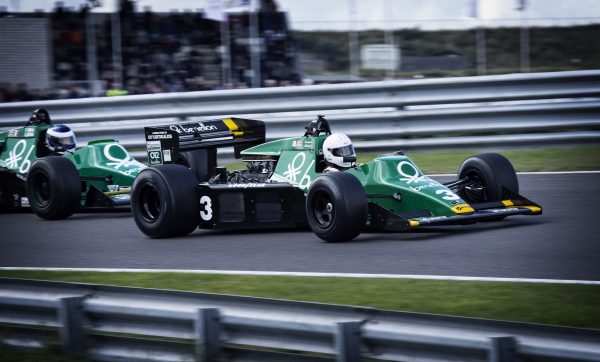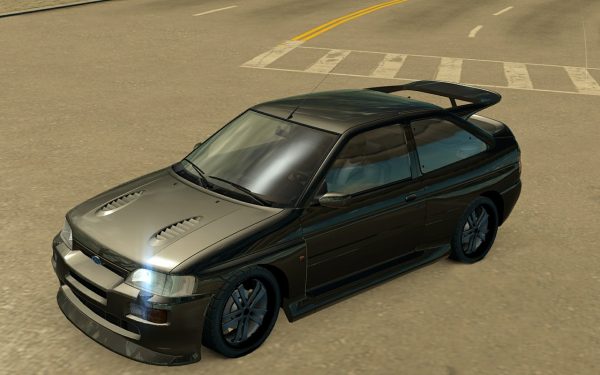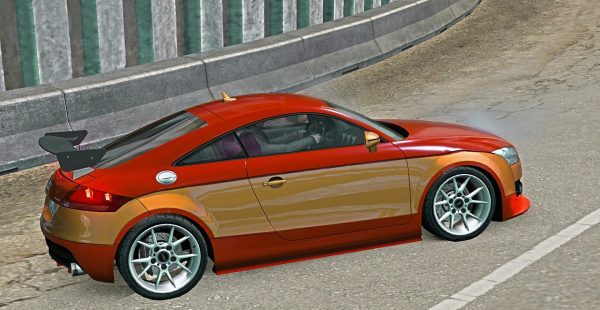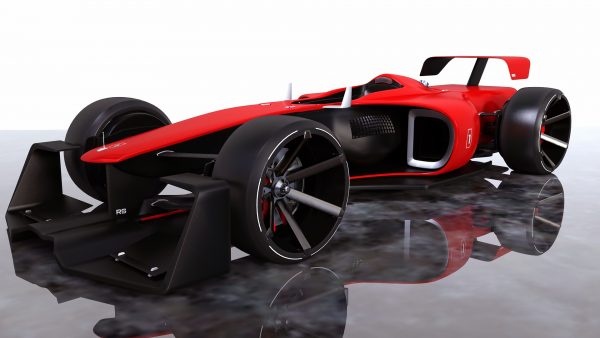Was Sie über die Entstehung von Project Cars 2 wissen müssen.
Die Fortsetzung der Racing-Simulation „Project Cars 2„ ist vor kurzem gestartet und kämpft weiterhin auf der Xbox und Playstation sowie als VR-Erlebnis auf dem PC um eine höhere Popularität. Das von Fans und Kritikern gelobte Spiel ist bekannt für seine authentischen Rennwagen-Repliken, Strecken und Wettersimulationen – alle inspiriert von realen Daten. In dem folgenden Interview mit Stephen Viljoen, dem Game Director von Slightly Mad Studios, erhalten Sie einen Einblick in den Entstehungsprozess der Inhalte hinter dem Spiel.
Erzählen Sie uns von den Slightly Mad Studios.
Slightly Mad Studios ist ein Spieleentwicklungsstudio und -vertrieb, welches im Jahre 2004 durch eine Gruppe von 10 Personen gegründet wurde. Mittlerweile sind wir auf 150 angewachsen und haben einen kleinen Hauptsitz in London. Unser Team arbeitet aus der Ferne, was es uns ermöglicht, mit den besten Talenten der Welt zusammenzuarbeiten, ohne dass ein Umzug erforderlich ist. In den letzten 13 Jahren haben wir viele kommerzielle Titel und IP-Spiele veröffentlicht, darunter auch unser eigenes „Project Cars“ IP.
Was ist „Project Cars“ und seine Entstehungsgeschichte?
Wir wollten schon immer das ultimative Rennsimulationsspiel entwickelt, aber bis vor kurzem war die Technologie, die wir dazu benötigten noch nicht verfügbar. Project Cars 2 kann als Highlight unserer langjährigen Arbeit angesehen werden, es ist das Spiel, das wir seit jeher anstreben – ein authentisches Simulationserlebnis, das ihnen einen Eindruck davon vermittelt, wie es sich anfühlt, ein Rennfahrer in verschiedenen Ligen und Organisationen zu sein.

Wie unterscheidet sich „Project Cars 2“ von anderen Rennsport-Titeln auf dem Markt?
Der Detaillierungsgrad ist ein wesentliches Unterscheidungsmerkmal. Es bietet ein authentisches Rennerlebnis, während es die Spieler mit einem aufregenden Gameplay in den Bann zieht. Unser Simulationsmodell ist komplexer und detaillierter als das anderer Renn-Ips. Wir simulieren die Autos, Strecken und Umgebungen mit größerer Tiefe und Genauigkeit. Wir haben einen virtuellen Planeten erschaffen, auf dem wir Wettersysteme, Wolkeninformationen und -muster realistisch simulieren können, um das Wetter, die Temperaturen und die Bedingungen, unter denen die Fahrer fahren, genau widerzuspiegeln und zu beeinflussen.
Wie unterscheidet sich die Fortsetzung vom Original?
Wir haben neue Inhalte hinzugefügt und die Funktionen und Technologien, die das Spiel unterstützt, verbessert. Es ist nicht nur eine iterative Fortsetzung, sondern eine neue Rennerfahrung. Wir haben Autos und Strecken hinzugefügt, die einen anderen Stil des dynamischen Gameplays bieten und neue Hersteller von Ferrari über Lamborghine bis hin zu Porsche neu integriert. Neue Rennstrecken wie Indie Car und Rallye Cross sind ebenfalls hinzugekommen.

Erzählen Sie uns etwas über die Art der Autos im Spiel und über den Entwicklungsprozess, um diese zu erstellen.
Wir haben uns für Autos entschieden, die eine bedeutende Rolle im Motorsport spielen oder gespielt haben, einige davon stammen aus den 1950er Jahren. Von Langstreckenrennen bis hin zu Open Wheel Racing, GT, Touring oder Rallye-Cross, wir wählen die Autos handverlesen aus und arbeiten eng mit den Herstellern zusammen, um die Daten aus der realen Welt zu erhalten, die wir benötigten, um sie zu rekonstruieren. Es ist wichtig, sich nicht nur auf ihr Aussehen zu konzentrieren, sondern auch die Benutzerfreundlichkeit, den Sound und weitere Aspekte zu berücksichtigen. Mithilfe von CAD-Dateien und Referenzfotos der Hersteller sind unsere Künstler in der Lage authentische und digitale Modelle zu erstellen.
Was ist mit den Umgebungen?
Die Tracks sind nahezu exakte Repliken, die mit Hilfe von Daten aus Laserscans und Drohnenfotografie erstellt wurden, welche von Drittanbietern stammen. Wir arbeiten mit weltweiten Tracks, um die Lizenzierung und Freigabe für die Datenerfassung zu erhalten, einschließlich Spa, Le Mans, die Nordschleife, Road America und Sonoma in den USA. Das Spielt beinhaltet auch einige öffentliche Strassen wie Pacific Coast Highway (PCH) und Azure Highway. Laserscans erfassen die Form, Größe und Umgebung der einzelnen Spuren, die wir dann mit Hilfe von Punktwolkendaten digital in 3D reproduzieren. Drone-Scanning wird für die Photogrammetrie verwendet. Wir erfassen die Textur, Topographie und das Profil der Strecke der umliegenden Gebiete. Diese Daten werden mit den Laserscandaten kombiniert, um Orte mit hoher Treffsicherheit und Detailgenauigkeit wiederherzustellen.

Nachdem Sie die Daten für die Autos und Umgebungen gesammelt haben, was kommt als Nächstes?
Wir haben getrennte Track- und Car-Teams, aber der Prozess der Content-Erstellung ist für beide ähnlich. Zuerst geben wir die CAD-Daten des Automobilherstellers oder die Laserscandaten der Umgebungen in Autodesk 3ds Max ein, von denen unsere Pipeline stark abhängig ist. Diese Daten sind typischerweise Millionen von Punkte – viel zu hoch, um sie in einer Game Engine der aktuellen Konsolengeneration effizient zu nutzen – so optimieren wir die Daten, ohne die kritische Genauigkeit zu verlieren. Die Optimierung und Neuerstellung von Umgebungen in 3ds Max ist ein großer Teil unseres Workflows. Sobald die Assets fertiggestellt sind, exportieren wir Dateien und importieren sie in das Spiel. Von dort aus werden Details der In-Game-Anwendung, wie z.B. dynamische Optiken, angewendet.
Beschreiben Sie die Physik des Spiels.
Die Physik der Fahrzeuge und der Umgebungen ist sehr detailliert und genau simuliert und erstellt – von den Reifen über die mechanische Untermauerung, wie sich das Auto bewegt, wie sich das Auto verhält, wenn man es fährt, bis hin zur Umwelt selbst. Wir haben auch physikalische Materialeigenschaften in den Umgebungen simuliert, wie z.B. die Griffigkeit von Reifen und die Saugfähigkeit von Wasser auf Schmutz und Gras. Darüber hinaus haben wir das Temperaturverhalten dieser Oberflächen kontrolliert.

Auf welche Herausforderungen stießen Sie bei der Optimierung von „Project Cars 2“ für VR?
Wir mussten sicherstellen, dass die Objekte in Größe und Maßstab genau erscheinen. Sobald das Gehirn merkt, dass etwas nicht stimmt, endet der Glaube des Spielers und er wird von der Experience abgezogen. In 2D ist das kein Problem, da sich der Maßstab je nach Größe des Bildschirm ändert, aber in VR muss alles genau sein. Um dies zu überwinden, arbeiten wir bereits im Vorfeld eng mit den Fahrzeugherstellern zusammen. Ich sitze physisch in den Autos und lege meine Hände auf das Lenkrad und die Bedienelemente, um die Waage zu messen und verwende diese Information als Leitfaden.
Wir mussten auch die IPD berücksichtigen, also den Augenabstand. Für eine Person mit einem großen Kopf und weit auseinander liegenden Augen erscheinen die Bilder kleiner. Um dieser Varianz Rechnung zu tragen, haben wir einen Schieberegler, den die Spieler anpassen können, um die Skala an ihre Vorlieben anzupassen. Dann gibt es noch die anderen Probleme, die Sie mit einem Flachbildschirm nicht erleben wie z.B. die Reisekrankheit – um dem entgegenzuwirken, verlassen wir uns auf das Feedback von Spielern. Wenn Menschen von Reisekrankheit berichten, ist das ein Hinweis darauf, dass wir die Bewegungen der Kameras anpassen müssen. Wir versuchen auch, die Kamerabewegungen so natürlich wie möglich zu halten, um das Spieleerlebnis so angenehm wie möglich zu gestalten.
Was kommt für Slightly Mad Studios als Nächstes?
Da immer mehr Spieler das Spiel erleben und Feedback austauschen, nehmen wir Anpassungen vor. Im Moment konzentrieren wir uns auf Post-Release Content und Feature-Updates für die Fortsetzung. Darüber hinaus haben wir ein paar Titel im Angebot, die wir schon bald ankündigen werden.


